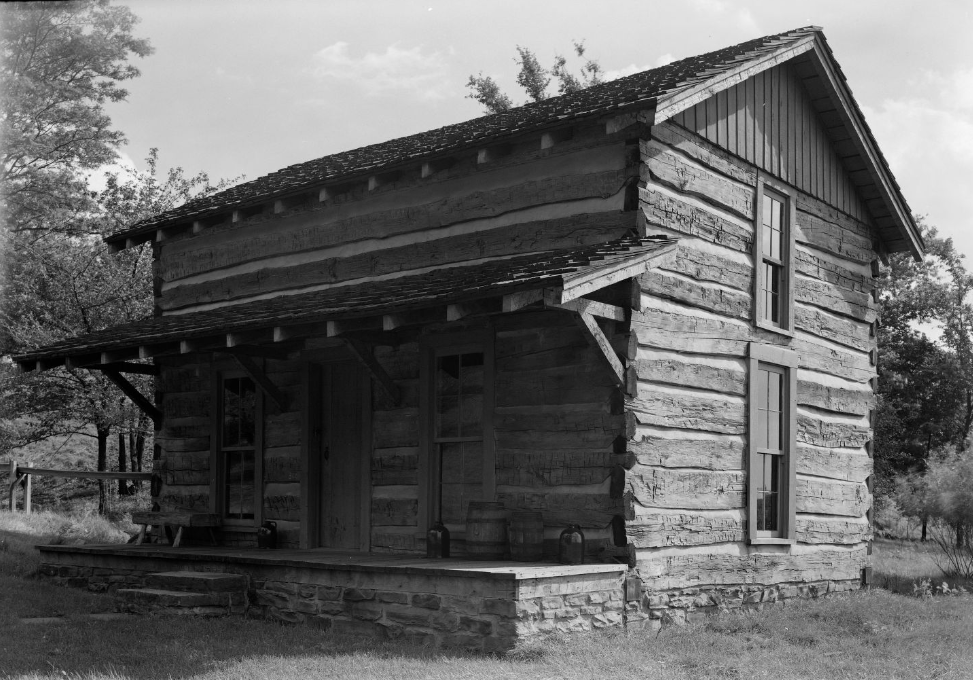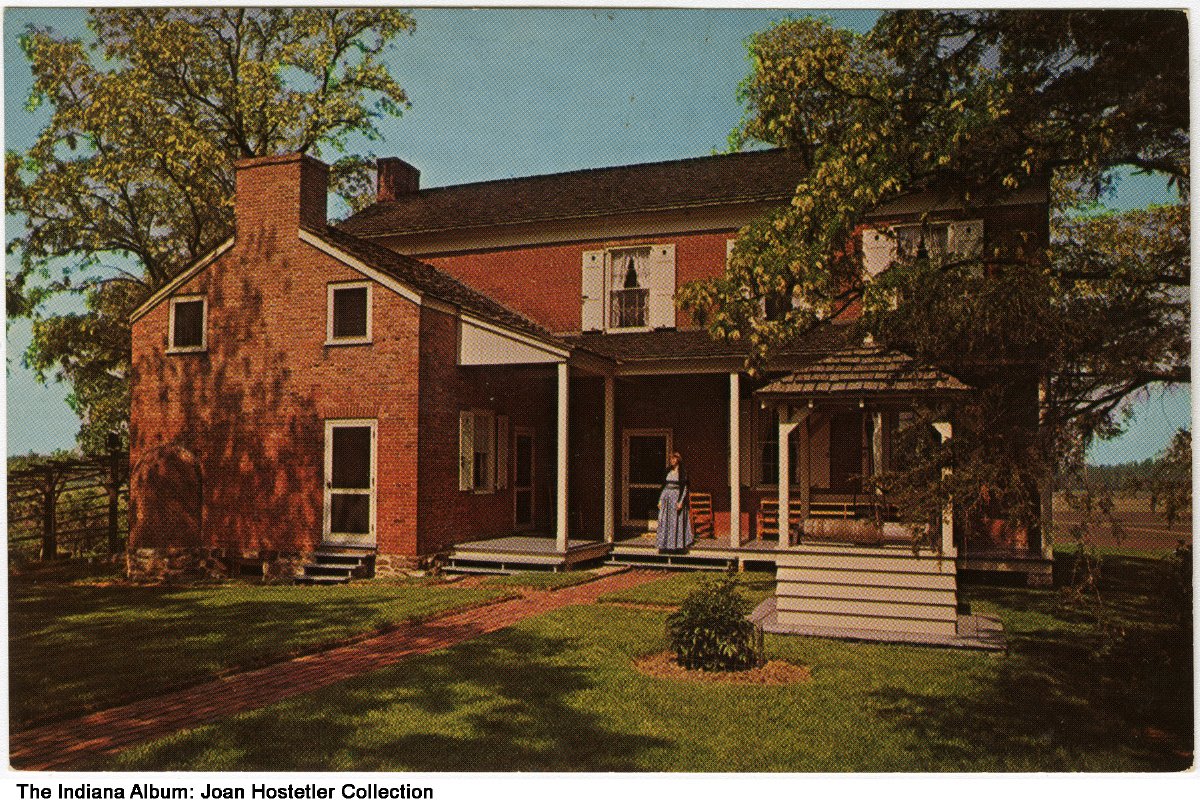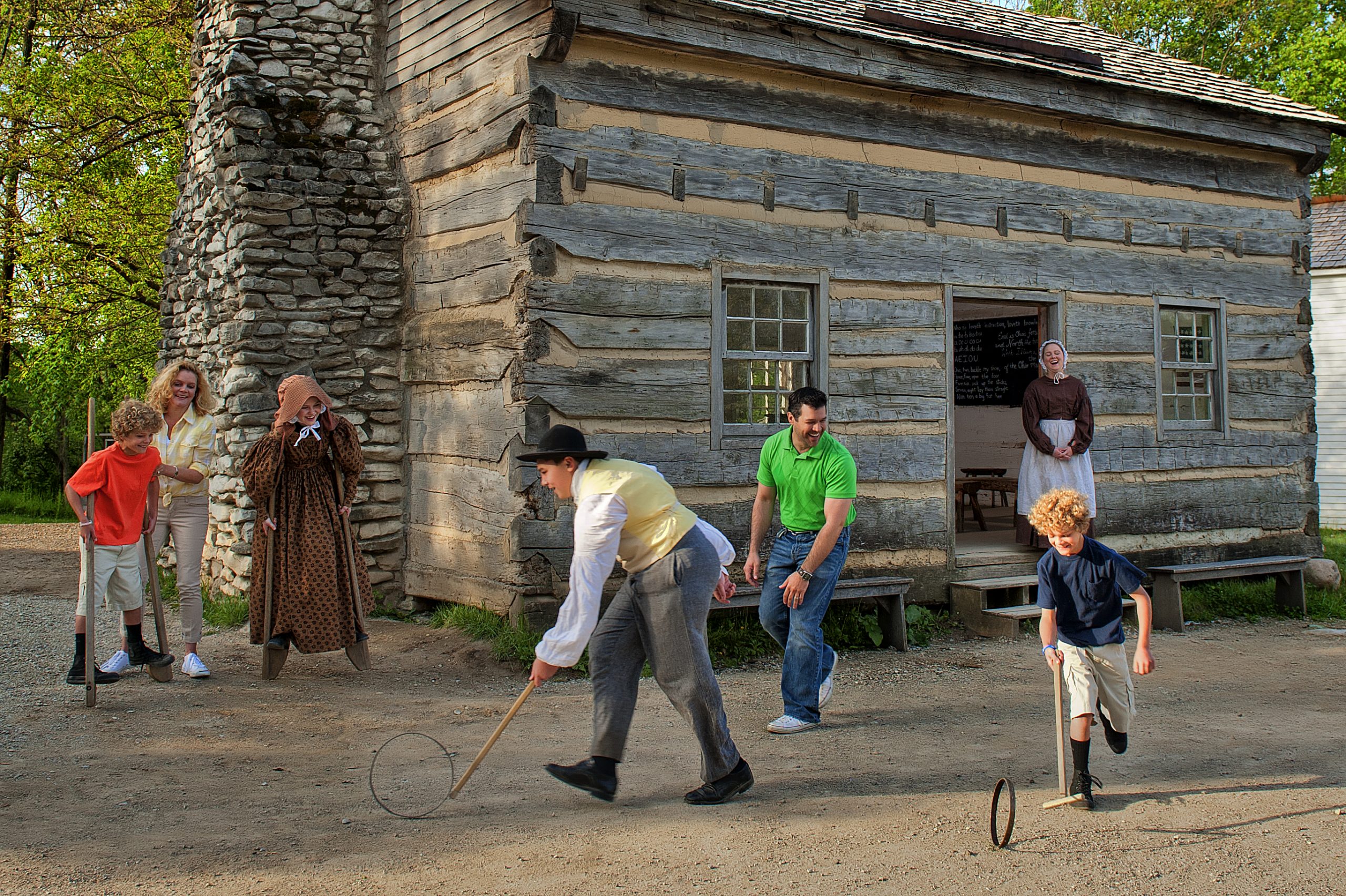Founded in 1964, Conner Prairie’s mission was to study and interpret the world of the early 19th-century settler in the Old Northwest by focusing on the Indiana experience. The mission has since evolved towards a broader focus: inspiring curiosity and fostering learning through engaging and individualized experiences.

Conner Prairie is located on lands originally settled by , one of the first permanent white settlers in central Indiana. The Conner home and lands passed through many hands before being purchased by pharmaceutical industrialist in 1934. Following the lead of early preservation efforts like those at Colonial Williamsburg and Greenfield Village, Lilly oversaw an extensive restoration of the Conner house. The site, initially called Conner Prairie Farm, also served as a model working farm. Lilly’s keen sense of the property’s historical significance impelled him to make other changes. A still house, loom house, and reconstructed trading post were all added by 1940. He also permitted the staging of historical pageants and visits by interested parties.
Lilly passed the stewardship of Conner Prairie to Earlham College in 1964, along with an endowment and continuing financial support. One of his few provisos was that the site remain open to the public. In the early 1970s, Earlham administrators decided to recreate a “typical” 1830s pioneer village. Period buildings from throughout Indiana were moved to Conner Prairie, and the village Prairie town, featuring costumed interpreters, opened in 1974.
Conner Prairie was divided into three historic areas comprised of 39 buildings. The 1836 village was joined by the restored William Conner house and the Pioneer Adventure Area, where visitors could participate in activities such as weaving, woodworking, and candle making. Programs were held on the grounds, such as Symphony on the Prairie, a summer concert series from the Indianapolis Symphony Orchestra that began in 1982.
A new museum center, opened in 1988, housed a collection of 15,000 artifacts, a 4,500-volume research library, and an exhibit gallery. It also contained administrative offices, classrooms, a theater, and a museum shop and restaurant. Other buildings on the 210-acre museum site included a historic craft and maintenance center and storage facilities. To ensure the William Conner house remained structurally sound and open to future generations, a multimillion-dollar “re-restoration” of the historic home occurred in 1992-1993.

In 1998, Conner Prairie began a new interactive experience, Follow the North Star, where visitors became a group of fugitive slaves in Indiana trying to get to freedom by using the Underground Railroad. The award-winning experience focused on creating empathy and conversation about slavery.
Beginning in the late 1990s, a dispute surrounding the governance and finances of Conner Prairie developed between leadership at Conner Prairie and Earlham College.
Earlham College was distressed over the increased operating deficit that occurred due to the expansion and improvement of the institution’s offerings. This resulted in Earlham dismissing Conner Prairie’s president as well as its board of directors in 2003 and taking over leadership themselves.
Earlham’s couple of years in charge did little to improve Conner Prairie’s outlook. Between 2003 and 2005, fundraising plummeted and the deficit increased from $500,000 to $3 million. After the intervention of the Indiana attorney general in 2005, Conner Prairie gained its independence from Earlham in a deal that split the endowment that Lilly had provided between Conner Prairie and the college.

Conner Prairie has since worked towards improving its financial situation as well as expanding its mission and adding several new additions to its experiences. The 1859 Balloon Voyage opened in 2009, complete with the world’s largest tethered gas passenger balloon. This same year, Conner Prairie became the state’s first Smithsonian affiliate and rebranded as an interactive history park. In 2011, the 1863 Civil War Journey: Raid on Indiana opened, telling the story of in Dupont, Indiana, through highly interactive experiences. Visitors experience immersive presentations that include live costumed interpreters and multi-media and theatrical presentations. They also are invited to participate in military drills and to gather supplies for the local Soldier’s Aid Society.
By the mid-2010s, Follow the North Star began to draw criticism for presenting a sanitized version of history, while not providing enough connection to the impact of slavery on modern times. In 2019, the International Coalition of Sites of Conscience, a global network of historic sites, museums, and memory initiatives that “connects past struggles to today’s movements for human rights,” recognized Conner Prairie as one of its Sites of Conscience. Other Sites of Conscience include the Tenement Museum in New York City, the National Museum of the American Indian, in Washington, D.C., and Old Sturbridge Village, another living history museum located in Sturbridge, Massachusetts. Conner Prairie used this new designation as an impetus to undertake a reimagining of Follow the North Star.
Other experiences include Animal Encounters, a Makesmith Workshop, Create Connect (hands-on experiences that celebrate Hoosier innovation), and several regular events and programs such as the popular Headless Horseman ride in the Fall. Conner Prairie also hosts a number of summer camps: Adventure Camp, Science Camp, Archaeology Camp, Photography Camp, Maker Camp, and Art Camp. In fall 2019, it expanded its educational offerings to include a preschool held in the president’s house, Preschool on the Prairie.

Help improve this entry
Contribute information, offer corrections, suggest images.
You can also recommend new entries related to this topic.